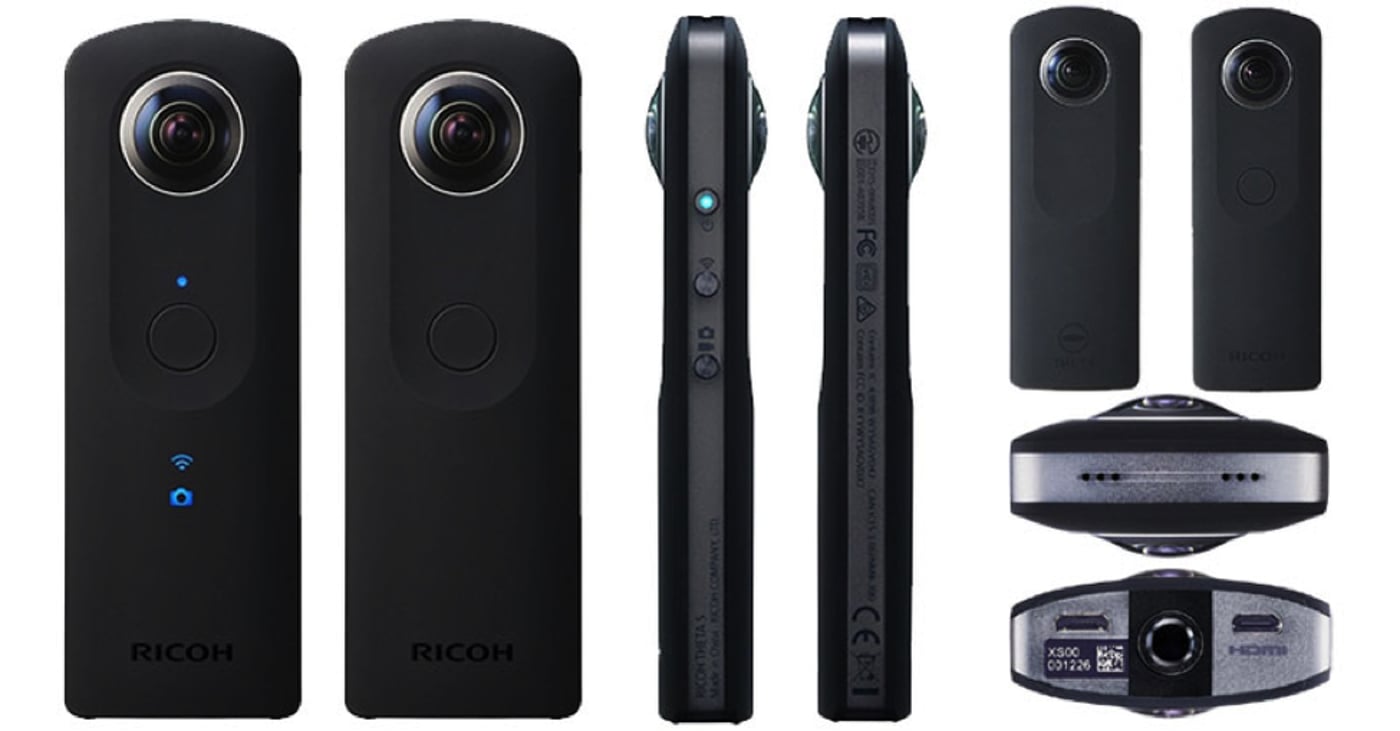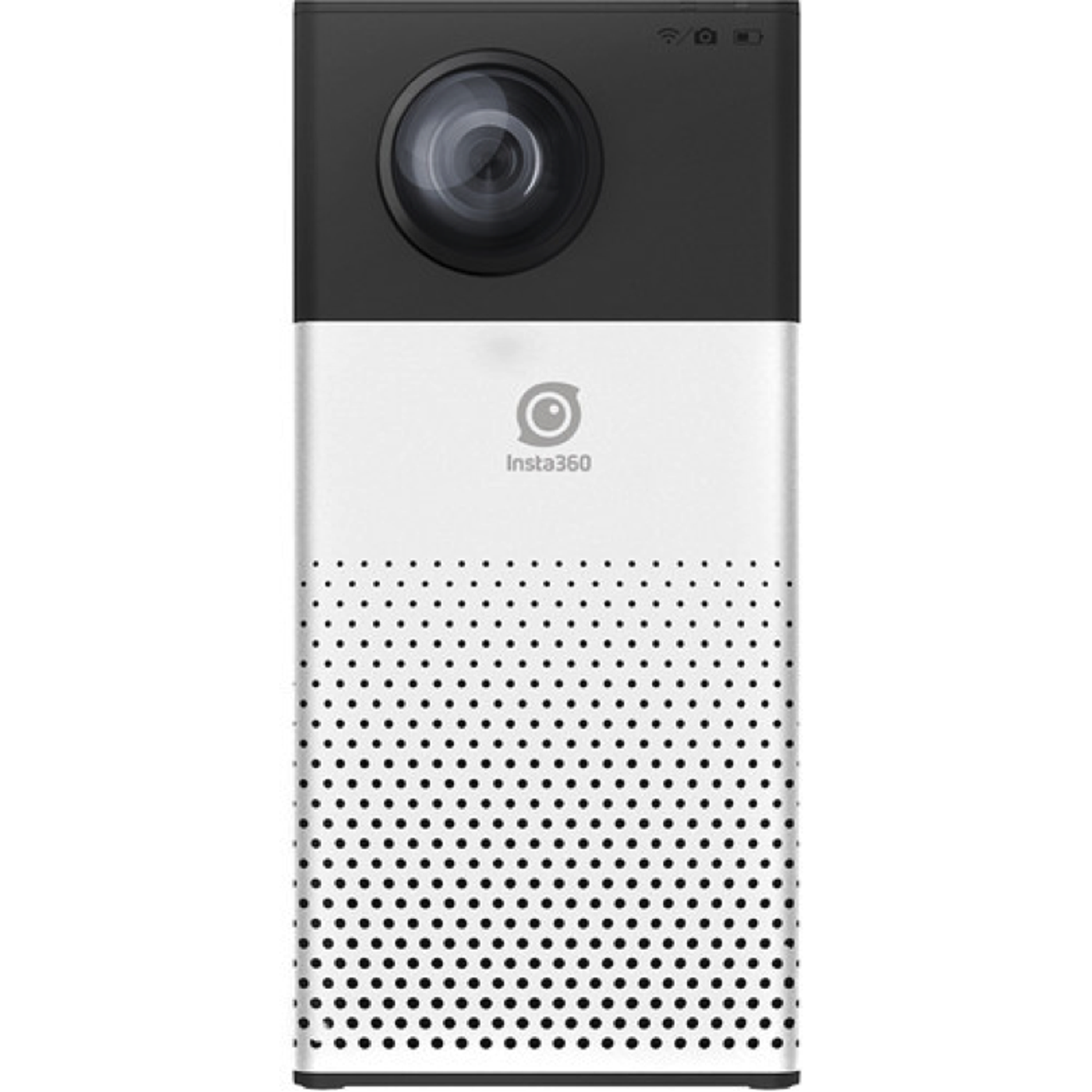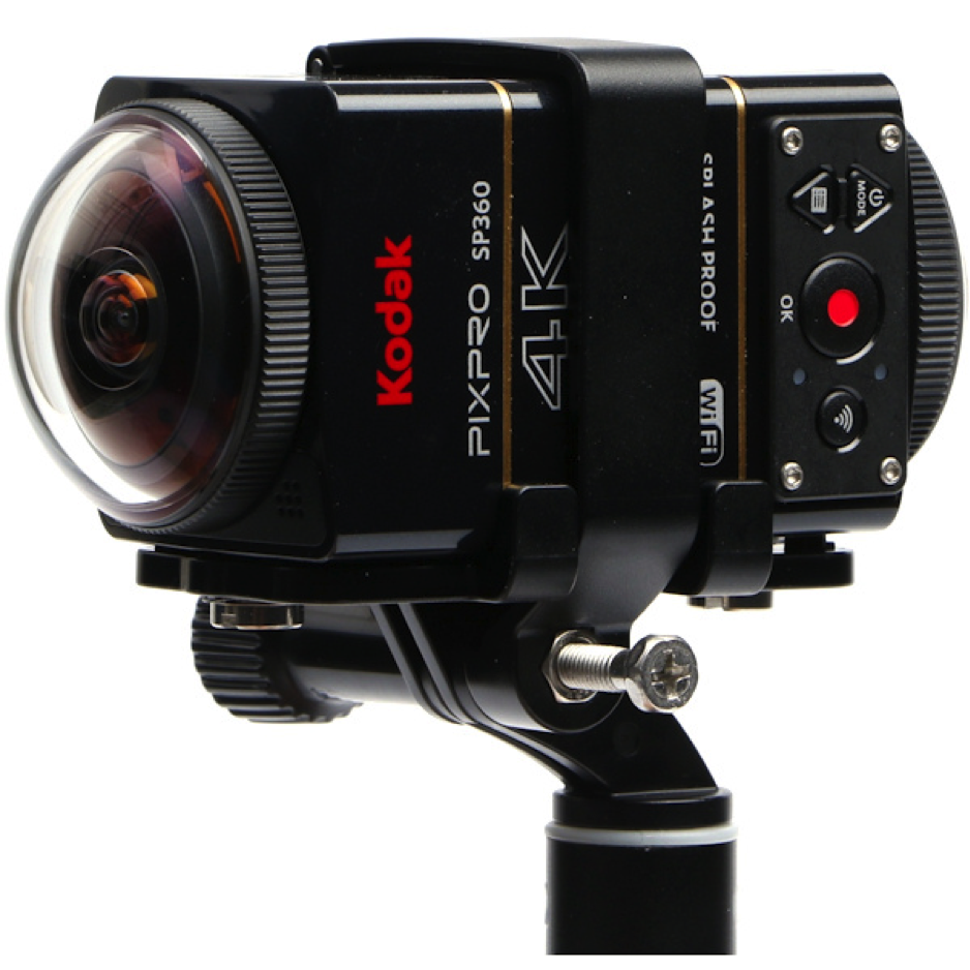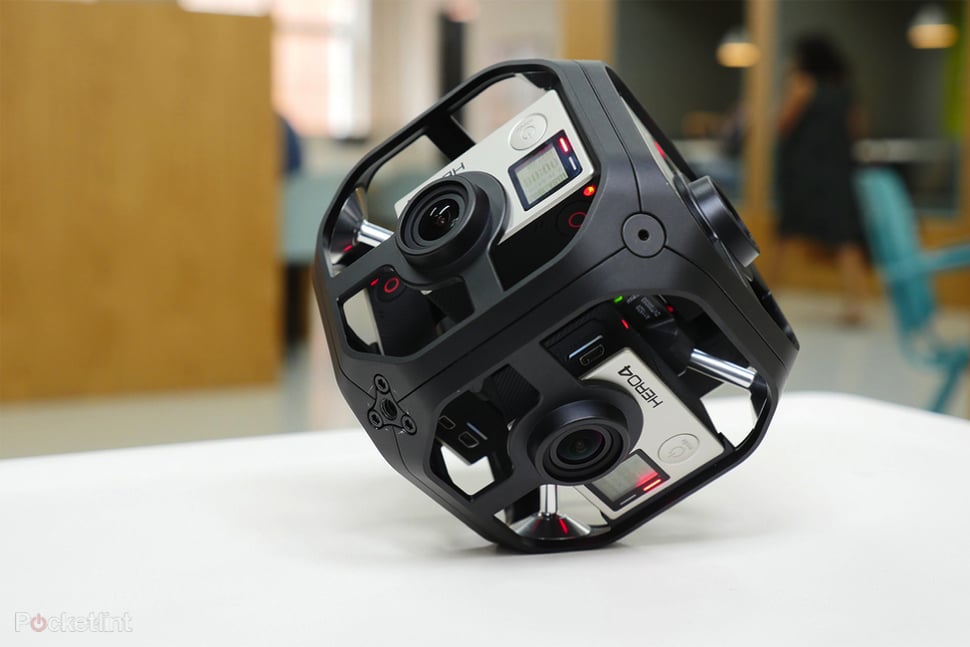360 Camera Review: Needs and Budgets
If you've ever shot a 360 video, then you know the process is
completely different from standard video production. Not only are the
storytelling techniques different, it takes an all-new type of camera to
get the job done. We'll look at a few of the best 360 cameras on the
market today. Along the way, we'll discuss a few of the pros and cons
associated with each camera, and try to figure out its ideal shooting
scenarios.
Quick note: this article will only cover 360 cameras that are true 360 or can be arrayed to display true 360 images. Cameras with a field of view less than 360 degrees have been omitted from this list. Let’s hop in:

Pros: highly portable, great still image quality, easily mountable, Bluetooth support
Cons: lackluster video, small disk capacity
Ideal for: travel photography, lifestyle videos
When it comes to introductory cameras, it doesn't get any better than the incredibly versatile Theta S from Ricoh. It's the second generation 360 camera from Ricoh, boasting 5376 x 2688 images and HD video. Versatility is where the Theta S really shines. Unlike the other cameras on this list, the Theta S easily slips into your pocket, making it ideal for travel and on-the-go 360 production. I use my Theta S every time I go out of town. While the video quality certainly leaves more to be desired, the still image quality could be compared to the Google Street View app.
However, the camera's limitations might make it a poor choice for professional use. Namely, the “HD” quality of the video isn't quite true. The camera uses a recording technique that automatically stitches the two 180 degree circular videos into a single HD frame. Needless to say this puts the video quality somewhere between SD and HD, so the pixels are incredibly easy to see when you put on a headset.
There are some other basic quality problems, like low dynamic range and a small, 8GB disk capacity. You'll only be able to record around 1600 images, or 65 minutes of HD footage. That might sound like enough, but given the fact that there's no SD or external card support, the limit can be a hassle when you're out on location. Also, if you don't use a stand or mount to record on the Theta, your thumb will be in a large portion of the shot.
This video from Drew Palmer gives some good insight into the video quality of the Theta S.

Pros: low cost, compact size, bluetooth support
Cons: chromatic aberration, fuzzy video quality
Ideal for: action film, lifestyle video
Coming in slightly behind the Theta S, The LG 360 CAM is the most affordable 360 cameras on the list. The camera boasts high-res 360 images (5660 x 2830) and 2K video (2560 x 1280). Like other introductory cameras, the LG 360 CAM is small, lightweight, and fits easily into your pocket. The camera also has an app on iOS and Android devices. Unlike many of the cameras on this list, the LG 360 CAM relies on microSD cards rather than internal storage.
The 2560 x 1280 video quality on the LG 360 CAM isn't great. While it may outshine other consumer 360 cameras like the 360 FLY, you'd likely never want to use the LG 360 CAM in a professional context. Seams, pixels, and chromatic aberrations are clearly visible with the LG 360 CAM. However, if you are looking for a low-cost camera to practice 360 production or take quick on-the-go photos, the LG 360 CAM might be for you.

Pros: good video quality, removable microSDHC cards, bluetooth support
Cons: large body, poor audio quality
Ideal for: events, aerial videography, concerts, real estate
If you're looking to create professional 360 videos on a budget, look no further than the Insta360. While the camera may look like something out of a 1970s sci-fi film, it's anything but dated. The camera records 4K 360 video at 25fps, and 3K video at 30fps. And it uses an interchangeable microSDHC memory card, so you won't have to worry about dumping footage on set.
Unlike the introductory cameras on this list, the Insta360″s video quality is good enough for low to intermediate professional productions. Don't believe me? Insta360 allows users to download test footage on their website.
Compatible headgear allows users to live-preview the footage as it's being recorded. So as a director, you can experience exactly what your audience will experience. Keep in mind that the Insta360 isn't going to fit in your pocket, so be prepared to bring an extra bag if you're traveling.

Pros: slow motion, 5K video, high-quality footage, external MicroSD cards
Cons: must stitch video files on computer, price
Ideal for: corporate 360 video, documentaries, short films, real estate
When it comes to versatility, the Kodak PIXPRO SP360 4K outshines the rest. By itself, the camera can only record a viewing angle of 230 degrees, but when paired, two PIXPROs become one of the most useful 360 rigs on the market. The dual cameras can record 5760 x 2880 video footage at 30fps. If you want to use the Kodak cameras to record action sequences, you'll be delighted to hear that the dual cameras can shoot HD footage up to 120fps.
The cameras accept external microSD cards, and you can easily stitch the separate video files together using the software included in with the cameras. In my opinion, the dual Kodak PIXPRO camera array is the best option for a professional videographer looking to get into the world of 360 video production.

Pros: infinite number of shooting possibilities, monoscopic and stereoscopic options
Cons: slow setup time, difficult to organize, lots of preparation for editing
Ideal for: commercial videos, narrative film, controlled events
It's crazy to think that 360 video got its start with a GoPro Array, and years later a GoPro rig is still a very viable and professional option in the 360 video production world. We could spend an entire series of articles talking about the pros and cons of each individual type of GoPro array, but the thing to remember is that GoPro arrays take a lot of time and effort to put together.
That said, once your rig is assembled, your batteries are charged, and your cards are inserted, there's an infinite number of possibilities when shooting with a GoPro array. From GoPro's stereoscopic Odyssey to the GoPro Omni, there are dozens of arrays for every production. Plus, if you have a 3D printer you might be able to create your own GoPro 360 rig for cheap. Just download the free specs and get printing!
As with any GoPro array, you won't be able to live-preview your footage. You'll also have to stitch all of your GoPro video files together using a stitching software like Autopano.

Pros: all-in-one 360 camera, great image quality, global shutter, SSD drive, RAW video recording
Cons: price, 30fps-only, huge file sizes
Ideal for: music videos, cinematic 360 film, commercial production, live music
There are two distinct types of 360 video: stereoscopic and monoscopic. Most of the cameras on this list are monoscopic. Stereoscopic means that in addition to having a 360 field of view, the video file will appear to have depth, like a 3D movie. You must use an approved device or application to preview stereoscopic 360 video (like the Vimeo app). You’re also free to shoot in monoscopic if the project requires it. Fortunately, Vimeo supports both monoscopic and stereoscopic, and ensures that you can watch both versions for any video.
Each of the OZO's 8 camera sensors can record RAW 2K video file, resulting in about 45 minutes of continuous recording with the interchangeable 500GB SSD drive. The OZO is incredibly versatile. At only 9.3lbs, it can be mounted to a professional drone or simply placed on a 360-ready camera rig. The OZO's output capabilities allow it to live-stream 360 video to anywhere in the world.
This video from AbleCine is a great overview of the OZO's shooting capabilities.
Quick note: this article will only cover 360 cameras that are true 360 or can be arrayed to display true 360 images. Cameras with a field of view less than 360 degrees have been omitted from this list. Let’s hop in:
Consumer 360 cameras
Theta S
Price: $349Pros: highly portable, great still image quality, easily mountable, Bluetooth support
Cons: lackluster video, small disk capacity
Ideal for: travel photography, lifestyle videos
When it comes to introductory cameras, it doesn't get any better than the incredibly versatile Theta S from Ricoh. It's the second generation 360 camera from Ricoh, boasting 5376 x 2688 images and HD video. Versatility is where the Theta S really shines. Unlike the other cameras on this list, the Theta S easily slips into your pocket, making it ideal for travel and on-the-go 360 production. I use my Theta S every time I go out of town. While the video quality certainly leaves more to be desired, the still image quality could be compared to the Google Street View app.
However, the camera's limitations might make it a poor choice for professional use. Namely, the “HD” quality of the video isn't quite true. The camera uses a recording technique that automatically stitches the two 180 degree circular videos into a single HD frame. Needless to say this puts the video quality somewhere between SD and HD, so the pixels are incredibly easy to see when you put on a headset.
There are some other basic quality problems, like low dynamic range and a small, 8GB disk capacity. You'll only be able to record around 1600 images, or 65 minutes of HD footage. That might sound like enough, but given the fact that there's no SD or external card support, the limit can be a hassle when you're out on location. Also, if you don't use a stand or mount to record on the Theta, your thumb will be in a large portion of the shot.
This video from Drew Palmer gives some good insight into the video quality of the Theta S.
LG 360 CAM
Price: $199Pros: low cost, compact size, bluetooth support
Cons: chromatic aberration, fuzzy video quality
Ideal for: action film, lifestyle video
Coming in slightly behind the Theta S, The LG 360 CAM is the most affordable 360 cameras on the list. The camera boasts high-res 360 images (5660 x 2830) and 2K video (2560 x 1280). Like other introductory cameras, the LG 360 CAM is small, lightweight, and fits easily into your pocket. The camera also has an app on iOS and Android devices. Unlike many of the cameras on this list, the LG 360 CAM relies on microSD cards rather than internal storage.
The 2560 x 1280 video quality on the LG 360 CAM isn't great. While it may outshine other consumer 360 cameras like the 360 FLY, you'd likely never want to use the LG 360 CAM in a professional context. Seams, pixels, and chromatic aberrations are clearly visible with the LG 360 CAM. However, if you are looking for a low-cost camera to practice 360 production or take quick on-the-go photos, the LG 360 CAM might be for you.
Intermediate 360 cameras
Insta360
Price: $549Pros: good video quality, removable microSDHC cards, bluetooth support
Cons: large body, poor audio quality
Ideal for: events, aerial videography, concerts, real estate
If you're looking to create professional 360 videos on a budget, look no further than the Insta360. While the camera may look like something out of a 1970s sci-fi film, it's anything but dated. The camera records 4K 360 video at 25fps, and 3K video at 30fps. And it uses an interchangeable microSDHC memory card, so you won't have to worry about dumping footage on set.
Unlike the introductory cameras on this list, the Insta360″s video quality is good enough for low to intermediate professional productions. Don't believe me? Insta360 allows users to download test footage on their website.
Compatible headgear allows users to live-preview the footage as it's being recorded. So as a director, you can experience exactly what your audience will experience. Keep in mind that the Insta360 isn't going to fit in your pocket, so be prepared to bring an extra bag if you're traveling.
Kodak PIXPRO SP360 4K
Price: $899Pros: slow motion, 5K video, high-quality footage, external MicroSD cards
Cons: must stitch video files on computer, price
Ideal for: corporate 360 video, documentaries, short films, real estate
When it comes to versatility, the Kodak PIXPRO SP360 4K outshines the rest. By itself, the camera can only record a viewing angle of 230 degrees, but when paired, two PIXPROs become one of the most useful 360 rigs on the market. The dual cameras can record 5760 x 2880 video footage at 30fps. If you want to use the Kodak cameras to record action sequences, you'll be delighted to hear that the dual cameras can shoot HD footage up to 120fps.
The cameras accept external microSD cards, and you can easily stitch the separate video files together using the software included in with the cameras. In my opinion, the dual Kodak PIXPRO camera array is the best option for a professional videographer looking to get into the world of 360 video production.
Professional 360 cameras
GoPro array
Price: Varies ($3,000+)Pros: infinite number of shooting possibilities, monoscopic and stereoscopic options
Cons: slow setup time, difficult to organize, lots of preparation for editing
Ideal for: commercial videos, narrative film, controlled events
It's crazy to think that 360 video got its start with a GoPro Array, and years later a GoPro rig is still a very viable and professional option in the 360 video production world. We could spend an entire series of articles talking about the pros and cons of each individual type of GoPro array, but the thing to remember is that GoPro arrays take a lot of time and effort to put together.
That said, once your rig is assembled, your batteries are charged, and your cards are inserted, there's an infinite number of possibilities when shooting with a GoPro array. From GoPro's stereoscopic Odyssey to the GoPro Omni, there are dozens of arrays for every production. Plus, if you have a 3D printer you might be able to create your own GoPro 360 rig for cheap. Just download the free specs and get printing!
As with any GoPro array, you won't be able to live-preview your footage. You'll also have to stitch all of your GoPro video files together using a stitching software like Autopano.
Nokia OZO
Price: $45,000Pros: all-in-one 360 camera, great image quality, global shutter, SSD drive, RAW video recording
Cons: price, 30fps-only, huge file sizes
Ideal for: music videos, cinematic 360 film, commercial production, live music
There are two distinct types of 360 video: stereoscopic and monoscopic. Most of the cameras on this list are monoscopic. Stereoscopic means that in addition to having a 360 field of view, the video file will appear to have depth, like a 3D movie. You must use an approved device or application to preview stereoscopic 360 video (like the Vimeo app). You’re also free to shoot in monoscopic if the project requires it. Fortunately, Vimeo supports both monoscopic and stereoscopic, and ensures that you can watch both versions for any video.
Each of the OZO's 8 camera sensors can record RAW 2K video file, resulting in about 45 minutes of continuous recording with the interchangeable 500GB SSD drive. The OZO is incredibly versatile. At only 9.3lbs, it can be mounted to a professional drone or simply placed on a 360-ready camera rig. The OZO's output capabilities allow it to live-stream 360 video to anywhere in the world.
This video from AbleCine is a great overview of the OZO's shooting capabilities.
Comments
Post a Comment